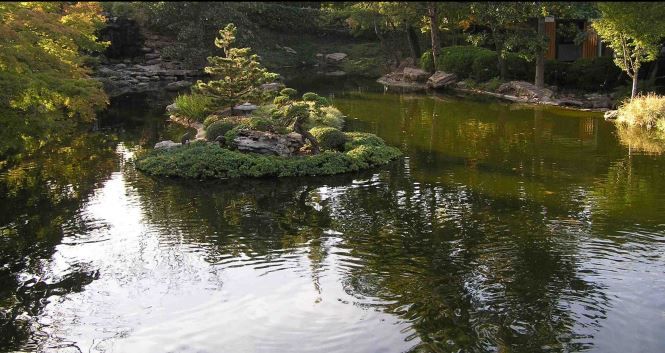Four score and seven years ago our forefathers knew nothing about ponds or filtration. In fact, the early pioneers of the ornamental pond and koi-keeping hobbies were taxed to find methods to keep their water clean and clear and their prized fish healthy.
Even now, with all our modern technology, we still find it difficult to create and maintain a healthy, clean pond environment. What we have learned is that it takes filtration - and lots of it!
The word “filter” is somewhat overused but none-the-less necessary when it comes to ponds. There are filters for taking debris out of the water, for clearing up green algae, for pre-screening the intake of the pump and for raising bacteria levels in the pond. Some of them are natural while others are commercially available. Before we can find a solution for our particular pond we must know what purpose each of the filters serve.
Mechanical Filtration
Mechanical Filtration is the term we use for the process of removing dirt and debris from the water. This can be accomplished by several methods and each method filters the water by different degrees.
Anything that encourages solids to settle to the bottom so that they can be later removed is a method of mechanical filtration. This can be achieved naturally in a streambed but it’s difficult to remove the dirt without washing it down to the bottom pond when the streambed is cleaned. Commercially available settlement tanks are better choices because they are designed so the settlement can be drained from the bottom.
Another method of removing solids is by trapping the solids in filtering material then removing and cleaning it later. This is achieved by directly water flow through the material. Coarseness of the material used will determine what size particles will be filtered out. For example, fine particles of sand will not be trapped by screens where the opening is larger than the particles.
Biological Filtration
Biological Filtration is the term we use for any material that aids in the growth of nitrifying bacteria. Nitrosomonas and Nitrobacter are the two bacteria responsible for the nitrifying cycle that converts deadly fish waste to fertilizer. That natural cycle must be running properly for many reasons - but most importantly for the health of any fish in the pond.
Bacteria colonizes on the surface area of many types of material. It’s in the green coating of algae on the sides of the pond and plants. It’s alive in the mulm on the bottom of the pond. It‘s in the waterfall and stream along the wet sides of the rock. The optimum conditions for bacteria to grow is a mixture of water and air and plenty of surface material on which to cling.
The streambed where mulm has settled can be considered a form of natural biological filtration. So can rocks along the bottom of the pond where muck has gathered between them. In fact, muck is so fertile a place for bacteria to grow, it can and does foster bad bacteria such as aeromonas and pseudomonas along-side the good bacteria. Left on its own a streambed or pond bottom lined with rock can transform a beautiful, healthy pond into an “anaerobic” nightmare - basically a dirty, foul-smelling sewer that is deadly to pond life!
A biological filter must be cleaned periodically to keep it healthy. Though a streambed can and must be cleaned, it’s impossible to clean a rock-lined pond bottoms without removing all the rocks! Though others will say that lining the bottom of your pond will clear up the water we say DON’T DO IT! Clear water does not necessarily mean it’s safe.
Unless you can easily clean a natural filter do not create it.
A dangerous misconception about the biology of ponds is that mother nature provides all the biological filtration a pond needs. After all, isn’t a pond a natural body?
The answer is “NO”. I’ve never seen a natural lake that is lined with rubber. I’ve never seen the amount of fish in a natural pond that we keep in our comparably smaller ornamental ponds. The bacteria that naturally grows isn’t enough to support the fish load in an ornamental pond and the fish give off much more waste than natural enzymes can break down.
The best method for creating optimum conditions for clean bacterial growth is to locate the filter out of the water. Cleaning is easier and bacteria prefer air-enriched moist areas. Give the bacteria plenty of surface area to grow. Some materials are better than others to use for this purpose.
Filtration for Algae Control - Green Water
Let’s set the record straight - once and for all! Biological and mechanical filters are NOT effective methods of clearing up GREEN water. Green water is brought on by the growth of algae. It’s true that once (and if) the pond reaches a natural balance an algae bloom will clear up. It’s also true that a biological filter will aid in the development of that balance - but it’s only a small part of the process. The only “filter” that is 100% effective against algae is an ultraviolet water clarifier, or “UV” for short - and that’s a totally different animal not covered in this issue of What’s Up, Doc?. In fact, the UV, although it’s often called a filter, is not a filter at all.
